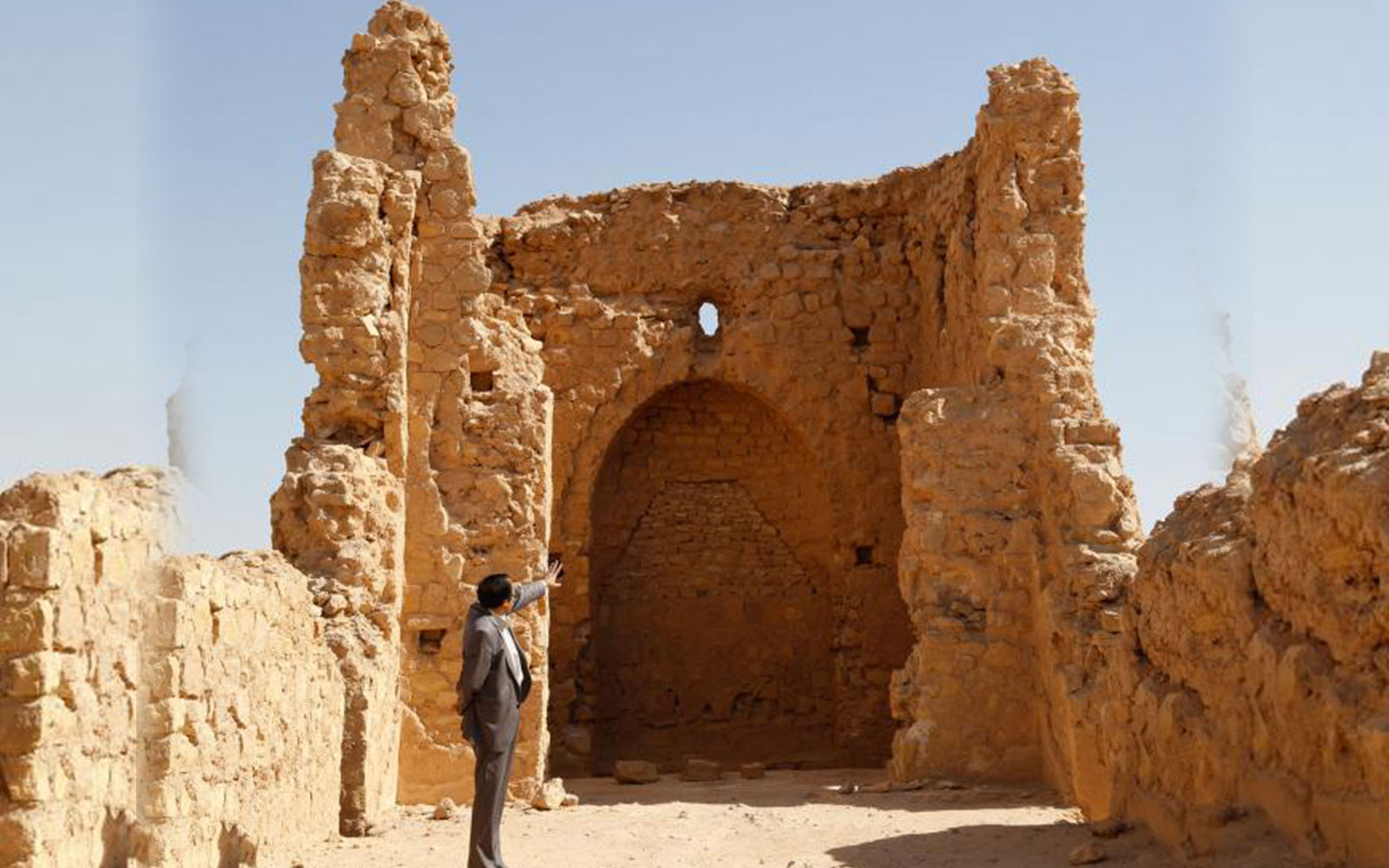The depth of religion and civilization of the city of Karbala can be shown in many of its sites, by a distance of no longer than (70 km) from the city center of Karbala, there is a historical milestone that completes the lines of civilization of this city, it is the Al-Uqaiser Church which was referred to by most of the archaeological and exploration studies in Iraq.
This church is located to the north east of Al-Ukhaydir Palace by 15 km to the right of the main street leading from Karbala to Ein Al-Tamer area in a secluded location on the banks of one of the valleys west of Razzaza lake. The church dates back to the fifth century BC and it is one of the most important sites that prove the authenticity of the Christian presence in Mesopotamia.
The church is shaped as a rectangular building whose dimensions are about 8 × 40 m. The rest of its shattered walls are about 8 meters high. These large walls represent the main chapel and the great apse of the church as it had lost its ceiling for a long time ago.
Alongside the church there are dozens of small rooms that each one of them does not exceed the size of (3 × 3) m2, which represent the rooms attached to the building of the main church for the monks' accommodation. The building of the church has many corridors and narrow passages, and next to them from the eastern part, a large hall containing a water well which was dried in full.
On the eastern side of the church lies a cemetery where Christians and monks are buried, as well as the general public. The width of every tomb is about 60 cm, 120 cm long and 120 cm deep and covered with solid stone slabs. The cemetery was looted, vandalized and destroyed by smuggling gangs, especially after the fall of the former Iraqi regime in 2003 and the emerge of political and security chaos in the country back then.
Next to this cemetery, which confirms the heavy Christian presence in this part of the country, there is a small archaeological building built with stone and plaster, it seems to be related to the ordinances of the burial of the dead. The church is surrounded by a wall that nothing left of it but a high sand walls surrounding the church in all its sides. The church is located in the center of a very large Christian settlement that exceeds the limits of (2 × 2 km) as a preliminary estimate.
We can observe that the remains of the Christian settlements extend along a strip of land located in the far west of Razazah lake until connecting to the settlements in Al-Hira area and the Sea of Najaf to the south. This Church is one of the oldest Churches in Mesopotamia and represents a nucleus of religious unification during its time.
.................................. ..............
Source:
The Civilization Encyclopedia of Karbala: The historical axis / Ancient History Department Vol. 1.

